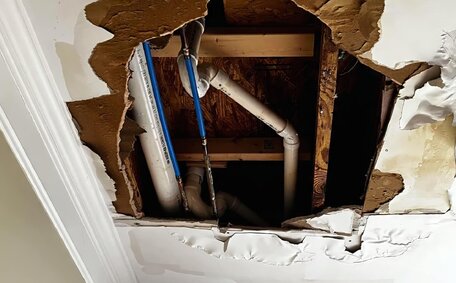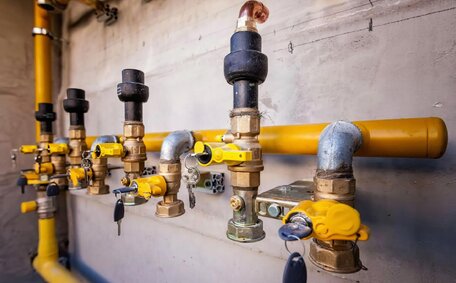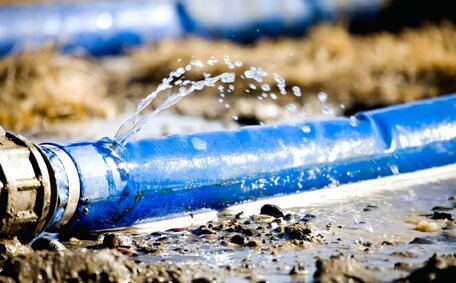Introduction to Slip Lining and Pipe Relining
Ensuring the performance of your plumbing system with sturdy PE pipes is key to your well-being. Traditional repair methods required extensive excavation, but innovative trenchless techniques such as pipe relining offer a less disruptive approach.
Factors like traffic, soil shifts, corrosion, and tree root invasion can compromise pipes, especially in places like New Zealand. Trenchless technologies such as slip lining and pipe relining offer streamlined, non-intrusive fixes for a range of sewer line issues.
Slip lining and CIPP lining, often referred to as pipe relining, stand as the top trenchless pipe repair methods. Understanding their key differences is vital for property owners assessing their sewer relining alternatives.
We will delve into the differences between sliplining and CIPP lining, along with alternatives like pipe bursting, highlighting their processes, materials, applications, and benefits. For residents and businesses in Lindfield looking to rehabilitate their plumbing, grasping these distinctions is key to selecting the right method.
What is Slip Lining?
Slip lining, along with methods like the spiral wound method, is one of the oldest trenchless techniques for rehabilitating ageing or damaged pipes.
It involves inserting a new carrier pipe, which can be used in place of the old, failing pipe, thus eliminating the need for excavating your yard or roads. The new pipe, crafted from materials like PVC, HDPE, or butt-welded steel pipe, has a marginally smaller diameter compared to the original pipe that has worn over time.
In slip lining, the replacement pipe is skillfully inserted through the length of the existing underground pipe. This method ensures the new liner is properly nested within the existing structure without disrupting your landscape. To stabilize the liner and prevent collapse, the annular space between the two pipes is filled with cement or epoxy resin.
After setting the liner, connections to branches or other pipes are re-established as needed. A major benefit of slip lining is the avoidance of extensive excavation, as it enables a full-length pipe replacement via small access points.
Overall, slip lining offers a cost-effective and low-impact solution for rehabilitating deteriorating cast iron sewer pipes, concrete pipes, clay, or steel pipes over 100mm in diameter. It’s a preferred option for pressure pipes, including iron sewer pipes, conveying water, gas and industrial liquids.
How Does Slip Lining Work?
Slip lining involves a multi-step process to insert a new pipe liner into an existing damaged pipe.
To begin, the hdpe, PVC or PE pipe liner is cut to the necessary length and all connections are pre-made. This new liner sits inside the host pipe, with a diameter about 25mm smaller to ensure a snug fit.
Subsequently, since they provide the ideal fit, the lining pipe is then navigated, either pulled or pushed, through the entire length of the original conduit. This process will require some specialised equipment like winches and rollers to delicately channel the new pipe into existing pipe entryways and other access points. The liner is meticulously aligned as it is introduced into pipe sections.
After positioning, grout is introduced into the annular space between the existing pipe and the new liner. This grout bonds the liner to the older pipe, offering stability. Typically, epoxy or cement grout are used.
Slip lining is the go-to method for rehabilitating large diameter pipe systems over 100mm across that are deteriorating but remain structurally sound. It’s an economically savvy solution with an affordable lining cost for restoring aged infrastructure, including iron sewer pipes, without the need for excavation.
What is Pipe Relining (CIPP)?
Pipe lining CIPP, synonymous with pipe relining, exemplifies trenchless pipe repair, rejuvenating damaged pipes without the chaos of excavation. It was first developed in North America in the 1970s as a less invasive alternative to traditional pipe replacement.
The CIPP method involves feeding a resin-imbued liner into the damaged sewer pipe, repairing and reinforcing it simultaneously. The liner is usually pulled or inverted into your pipe and then inflated to tightly adhere to the interior walls. Using hot water or steam, the resin cures to form a unified, seamless lining.
The pliability of CIPP linings before they set, allows effortless adaptation to the unique shapes of your pipes, even when they are not perfectly circular. As a result, CIPP essentially creates a new pipe within the old system, restoring structural integrity and flow capacity, while extending the lifespan of the compromised pipe.
Meanwhile, CIPP presents a continuous, watertight barrier free of joints or gaps, serving as the ideal solution for sewer line restoration. This method proves effective for refurbishing pipes afflicted with cracks, leaks, and invasions by roots.
How Does Pipe Relining Work?
The result is a jointless, seamless 'pipe within a pipe’ that seals cracks and restores flow capacity. Pipe relining can greatly prolong the functional life of your best sewer infrastructure by 50 years or more. It’s an efficient and effective trenchless method suitable for pipes 4 inches or larger.
Benefits of Pipe Relining
Pipe relining offers numerous benefits that make it an appealing trenchless repair method in many situations:
- It maintains the original pipe’s full diameter and flow capacity without any reduction in size.
- In considering what pipe repair option to choose, the epoxy resin liner provides a smooth, jointless interior that guards against corrosion and abrasion.
- Homeowners can take comfort in the fact that the new lining offers an extensive service life, typically 50-100 years, thereby reducing the need for future repairs.
- The turnaround time for installation is notably swift, typically spanning 1-3 days, and ensures minimal disruption to property or traffic.
- Without large excavations, relining is very cost-effective compared to full replacement.
- The process generates minimum noise, dust and waste material.
CIPP relining significantly restores structure to older buildings with worn pipes. It introduces a new lining to your sewer without intensive excavation, offering a resilient and adaptable solution for outdated plumbing.
Limitations of Pipe Relining
While pipe relining offers many benefits, there are some potential limitations to consider:
- The structural integrity of the host pipe must be adequate to support the liner. Severely deteriorated pipes may not be suitable.
- Some lateral connections may need to be reinstated following installation. This adds time and cost.
- Liner thickness reduces the diameter slightly. This may minimise flow capacity improvements.
Recognising each method’s strengths and weaknesses enables skilled professionals to navigate challenges with thorough planning. A careful comparison will reveal if relining is apt for your circumstances.
How to Choose Between Slip Lining and Pipe Relining
- Pipe condition - If the existing pipe is structurally unsound, collapsed or has major gaps, slip lining may be unsuitable as it relies on the host pipe for support. Pipe relining can better handle poor pipe conditions.
- Pipe size - Slip lining is optimally suited for pipes over 100mm in size. In contrast, pipe relining can restore pipes with sizes as diminutive as 50mm.
- Leaks and infiltration - Fully sealed CIPP liners provide superior leakage prevention compared to slip lining.
- Longevity - CIPP liners, known for their durability, offer a lifespan extending more than 50-100 years, outstripping slip lining, which usually ranges from 30-50 years.
- Business use - For commercial settings, pipe relining causes less downtime and disruption than slip lining large pipes.
- Tree roots - CIPP offers better protection against recurring root intrusion than slip lining alone.
In summary, for residential plumbing repairs involving smaller, particularly damaged pipes, pipe relining is usually the preferred renovation method. Slip lining often sees the new pipe carefully navigated through host pipe, working better for rehabilitating larger diameter municipal and industrial pipes in fair condition.
Collaborating with an experienced plumbing company like Lindfield Plumbing ensures the job done aligns perfectly with the most suitable and optimised sewer line repair technique for your unique situation.
Cost Comparison
Both slip lining and pipe relining offer significant long-term cost-efficiency over complete pipe replacement. Yet, distinct cost variations exist between the two methods that warrant consideration:
- Sliplining can present a lower initial material expense, with HDPE or PVC liners often priced between $60 - $150 per linear metre when installed.
- CIPP liners, while potentially more costly than other trenchless solutions, come with associated expenses typically between $130 - $250 per linear metre, dependent on pipe dimensions.
- However, CIPP installation is faster than slip lining, so total labour costs may be lower.
- Residential pipes less than 150mm in diameter can achieve pipe relining with expenses significantly lower, saving homeowners potentially thousands of dollars versus the costs of slip lining.
- For larger commercial and municipal pipes, slip lining can be the more affordable option.
Factors like pipe length, access and complexity will also impact costs. In general, Slip lining and relining technologies offer pipe renovation alternatives yielding significant cost savings of 50% or more compared to traditional pipe replacement and excavation.
Engaging with skilled plumbers who can provide comprehensive management of your project’s details is the perfect strategy to ensure a precise cost comparison for sewer pipe repair. They will assess all the variables involved and recommend the most suitable and cost-effective trenchless repair method for your needs.
Materials and Durability
The materials used in slip lining and pipe relining offer unique benefits and durability:
Slip lining typically utilises PE100 pipe materials like HDPE or PVC, showcasing their adaptability and resistance to chemicals and abrasion for diverse plumbing needs. These plastic materials are resilient, generally offering a 30-50 year lifespan.
Pipe relining uses a thermoset epoxy resin that is resistant to corrosion and abrasion when cured. CIPP liners created with epoxy have an expected service life of 50-100 years. Pipe relining uses a thermoset epoxy resin that is resistant to corrosion and abrasion when cured.
Epoxy resins are extremely tough and durable.
Both slip lining and pipe relining provide robust materials engineered for longevity in underground plumbing repairs. However, the epoxy resin used in CIPP relining offers greater durability, with an average lifespan up to twice as long as polyethylene or PVC slip lining.
Pipe Size and Flow Capacity
The size and flow capacity of pipes is an important consideration when choosing between slip lining and pipe relining.
With slip lining, the new liner pipe is always smaller than the original host pipe. This reduces the internal diameter and flow capacity. In this scenario, pipes would experience a reduction with 150mm pipe slip lined with a 125mm liner, losing over 30% of its cross-sectional area, significantly impacting flow.
Conversely, pipe relining with CIPP maintains almost the entire internal diameter. The liner, saturated in resin, fits snugly against the pipe walls before hardening, ensuring little change to the pipe’s size or flow capacity. Typically, relining may only narrow a 150mm pipe by 1-3mm.
For larger municipal and industrial pipes that convey high volumes, even small reductions in flow capacity from slip lining can be problematic. This ensures the relined pipe can sustain optimal flow rates, making CIPP relining suited for maintaining full functionality.
However, for residential plumbing and smaller diameter pipes under 100mm, the modest decrease in capacity from slip lining is usually acceptable. The lower cost of slip lining smaller pipes often makes it preferable.
When evaluating repair options, considering existing and required flow capacities will determine if a minimal reduction from slip lining can be tolerated or if full flow preservation with CIPP relining is the better solution.
Application Requirements
When deciding between slip lining and pipe relining, it’s important to consider the application requirements and site conditions for each method.
Slip lining generally necessitates straight pipe runs for inserting the new liner. Pronounced bends, offsets or changes in diameter in the existing pipe can render slip lining a more complex task.
Pipe relining using CIPP liners can navigate slight bends and curves more readily due to the flexibility of the resin-saturated felt. This makes CIPP better suited to pipe systems with some non-straight sections or variations in diameter.
Slip lining might not be viable if the pipe has collapsed segments, major holes, or gaps, but CIPP is adept at bridging smaller discontinuities.
For pipe access, slip lining normally requires a receiving pit with entry and exit points at each end of the pipe run for installation. Pipe relining requires access at least at one end, with the liner inverted or pulled into place from that point.
The specific layout, condition, and access to the pipe will dictate which renovation method can be practically employed to achieve the best results.
At Lindfield Plumbing, our experts conduct a detailed assessment with CCTV technology to ensure the chosen trenchless repair technique meets your specific needs.
Pronounced bends, offsets or changes in diameter in the existingakes CIPP better suited to pipe systems with some non-straight sections or variations in diameter.
Slip lining might not be viable if the pipe has collapsed segments, major holes, or gaps, but CIPP inserting a new plastic pipe liner into the old pipe and grouting the annular space. It functions effectively for large diameter pipes over 100mm, commonly found in sewer drain systems, that exhibit mostly straight runs. However, slip lining doners can navigate bends and provide corrosion-resistant epoxy barriers that maintain full pipe diameter. Relining is preferred for smaller, highly damaged or non-straight pipes.
Choosing between slip lining or pipe relining depends on the pipe’s size, state, shape, and the necessary flow rates. Each method offers trenchless sewer repair solutions that can lengthen pipe lifespan by more than 50 years.
If you’re seeking expert advice on the best pipe renovation method for your plumbing, get in touch with Lindfield Plumbing at 1300 349 338 or [email protected]. Our team offers comprehensive pipe relining services and will help you determine the best repair strategy for your needs.






